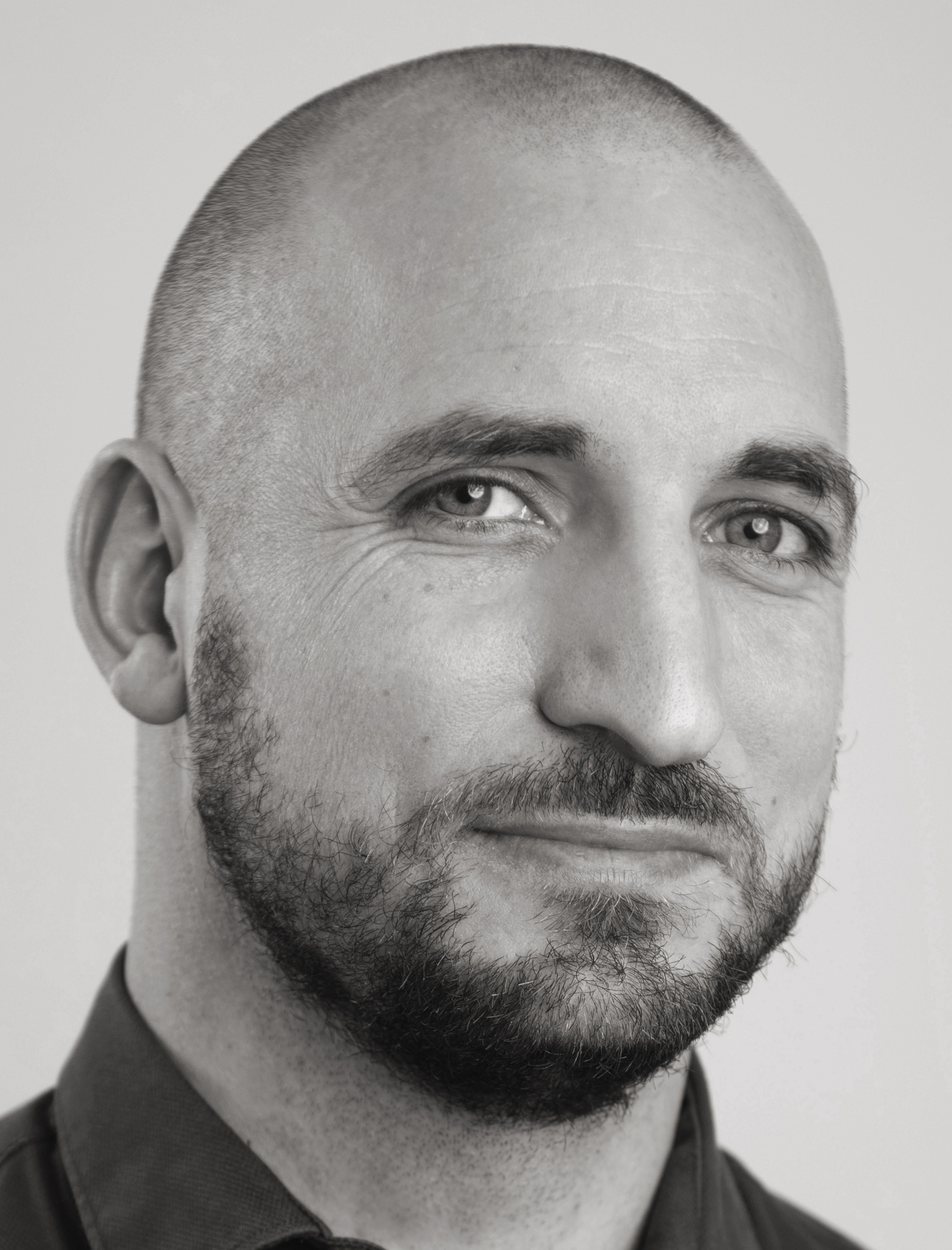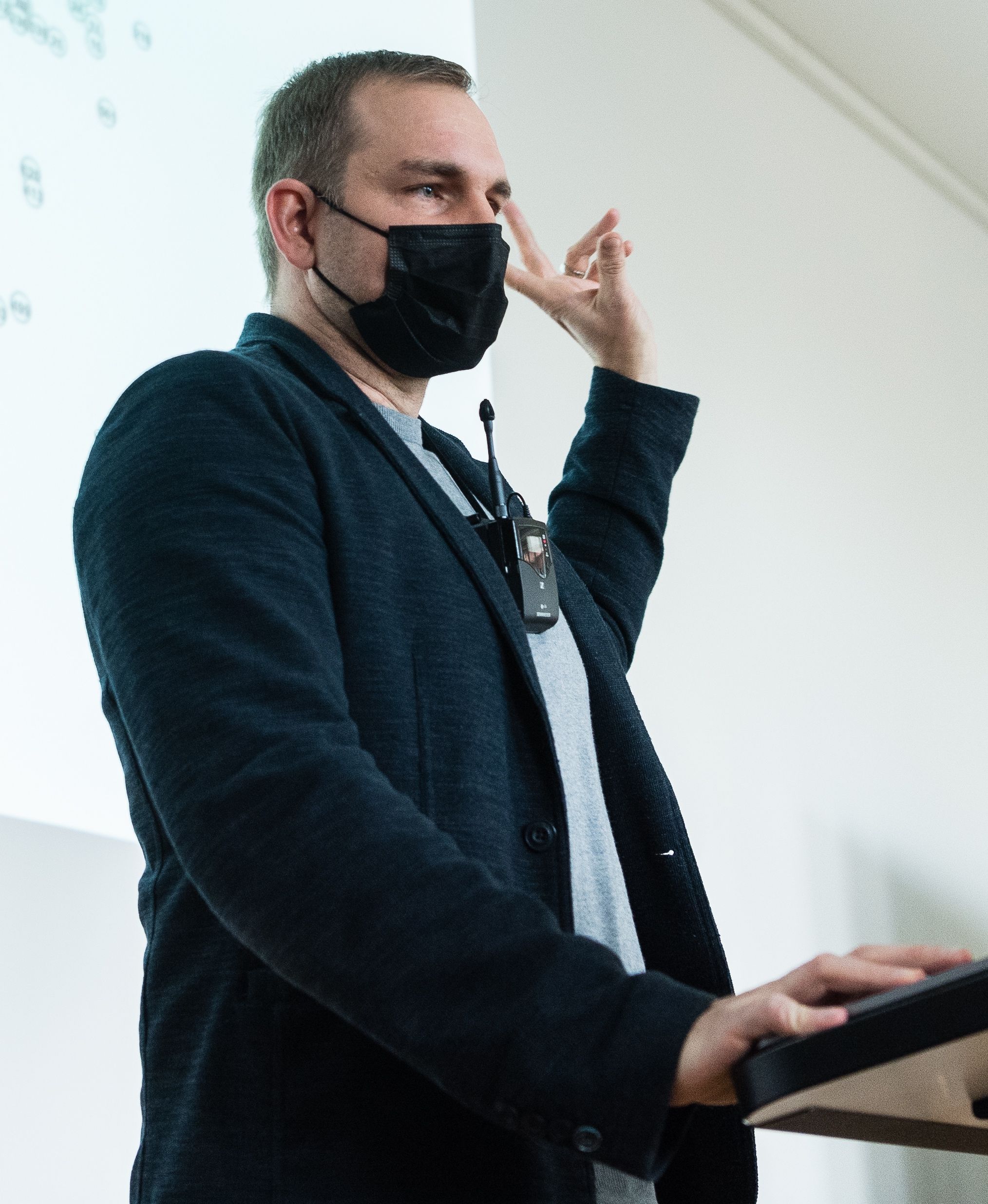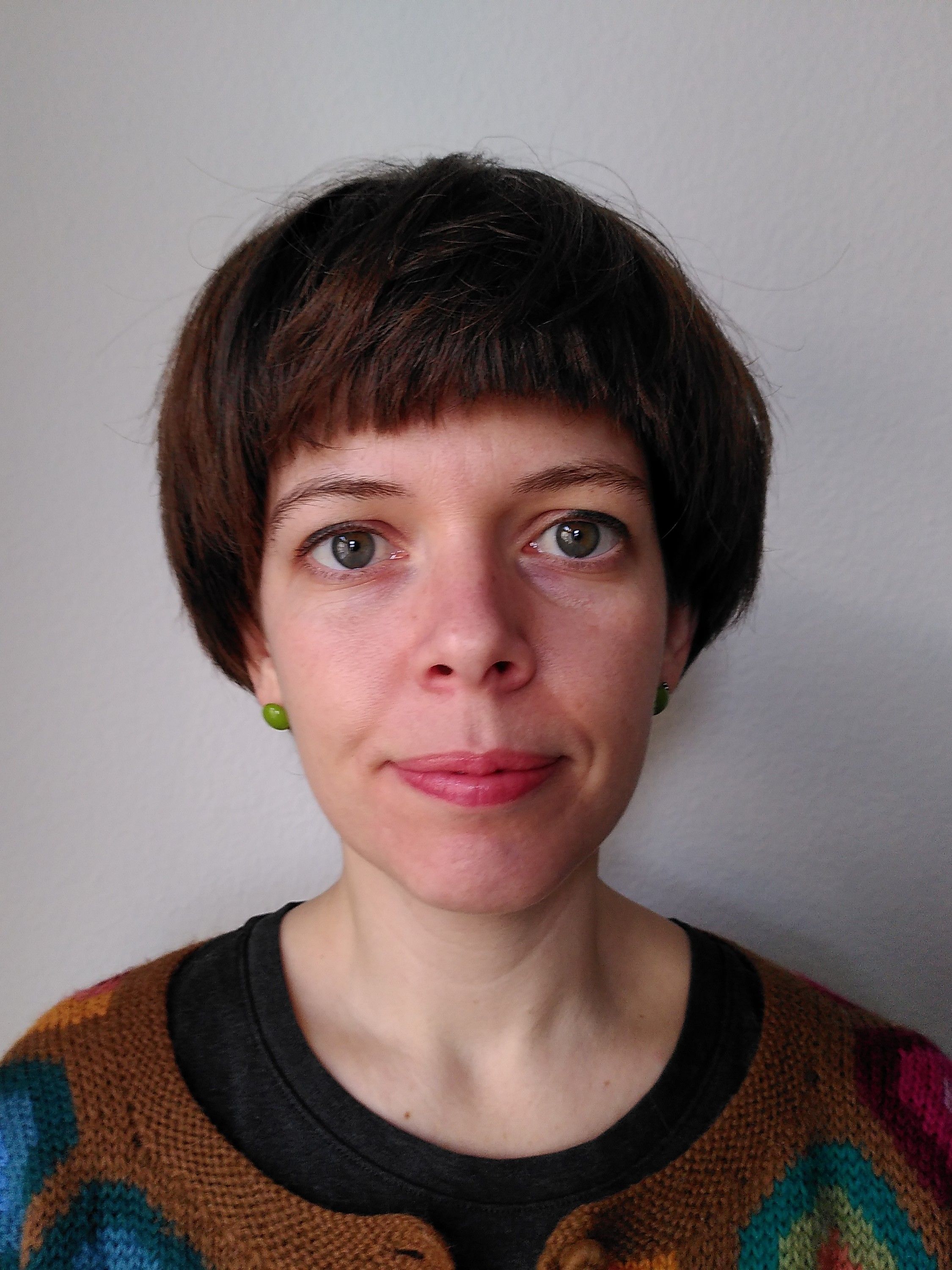DHCH@ISR 2022 / Presentations

<rdf:RDF>
<dhch:Presentation
dhch:topic
Actor-network theory (ANT) as a preliminary approach to data modelling
dhch:speaker
Julien A. Raemy
dhch:institution
Digital Humanities Lab, University of Basel
dhch:summary
As part of the Participatory Knowledge Practices in Analogue and Digital Image Archives (PIA) research project, the Knowledge Representation of cultural heritage resources, and mainly three photographic collections from the Swiss Society for Folklore Studies (SSFS), will be done using Linked Art, an RDF profile of the CIDOC-CRM ontology serialised in JSON-LD. This modelling will be carried out on the basis of the future SSFS Data Model as well as new assertions generated by the addition of end-user resources, the metadata enrichment via crowdsourcing as well as annotations created by Machine Learning methods notably through vitrivr, a multimedia retrieval system.
For the design of the PIA Data Model, and more generally for any Knowledge Representation, questions arise as to what influences the various groups of individuals involved in the process have, firstly on each other, secondly on the manifestation of the model and subsequently on how this particular Knowledge Representation will impact the different stakeholders, once it is implemented but equally throughout its creation.
A preliminary framework for analysing the process of creating the PIA Data Model is to apply the actor-network theory (ANT), a constructivist approach defined mainly by Bruno Latour. In the presentation, the following aspects will be considered: 1) identifying the human and non-human actants participating in the process and 2) investigating how the concept of translation is carried out within this network.
/>
</rdf:RDF>

<rdf:RDF>
<dhch:Presentation
dhch:topic
AI and DH: What's the point?
dhch:speaker
Willard McCarty
dhch:institution
Kings College London
dhch:summary
One question: what do we do about artificial intelligence? Hype subtracted, AI is how our lifeworlds are now being shaped and regulated by interests other than our own. In a call to action some time ago, Donna Haraway advised that, “The point is to get at how worlds are made and unmade, in order to participate in the processes, in order to foster some forms of life and not others.” Before the steep learning-curve comes the critical job of unpicking the acronymised package labelled ‘AI’, seeing what’s there and probing its relation with us. I ask Marilyn Strathern’s question: “the kind of connection one might conceive between entities that are made and reproduced in different ways—have different origins in that sense—but which work together.” I take first steps by way of the early reception history of ‘curiosity’s engine’ ca. 1940-1960, and so its entanglement with weaponry and automation on the one hand and its imaginative power on the other. Like curiosity, it has shown itself historically to be both an intellectual ideal and an unbottled jinn. We have much work to do.
/>
</rdf:RDF>

<rdf:RDF>
<dhch:Presentation
dhch:topic
AV archive as data - current practices and a thinking model
dhch:summary
For this workshop, I am proposing a talk based on a review of the digital and data turn of archives, especially audiovisual archives in memory institutions.
Digital humanities researches are not only innovative impulses on the traditional but a way to cope with the future. Similarly, archives and memory institutions should aim not only to preserve and provide the past, but the now and the future. Nowadays, according to research and surveys, 80% of the Internet is video. But are we able to efficiently archive and study these basic materials of humanities in the future?
In fact, there are already a substantial amount of audiovisual archives, either born-digital or digitised, laying around with limited and spontaneous works (mostly to enhance searchability) being done due to the lack of method and resources, limiting it from being more useful.
Videos, by nature, are complicated. It consists of audio, visual, temporal and semantic elements - simply too many things to be examined. There is an urgent calling for theoretical and practical overviews on this topic so that a foundation of the archiving and datafication of audiovisual materials can be built, enabling the semantic and aesthetics potential and the building of more situated solutions for using audiovisual archives in the digital future.
This particular talk will examine and explore three major aspects - A theoretical review on the purposes and functions of AV materials and archives and their corresponding quantitive descriptors; A review on schemas and standards on descriptors for audiovisual materials; A review on state-of-art practices on datafication and digitisation of AV materials and archives using computational methods.
Based on these three parts, preliminary speculation of a thinking model for understanding AV materials and archives as data will be formed. On a more practical level, a standardised workflow for the datafication of AV materials will also be presented.
/>
</rdf:RDF>

<rdf:RDF>
<dhch:Presentation
dhch:topic
Big Data – Big Responsibility: Why Machine Learning Needs New Forms of Cooperation
dhch:speaker
Tobias Hodel
dhch:institution
Universität Bern
dhch:summary
Machine Learning, especially deep learning, requires massive amounts of data to gain the capability to tag/generate/annotate visual and textual inputs similar to humans. Besides enormous problems from unbalanced and biased datasets that accompany deep learning, the humanities are faced with the task of creating and curating complex and adequate data. Only forms of collaboration that contradict traditional ways of operating in the humanities enable such efforts to be undertaken in the first place.
Rapid and open publication of data and critical reflection on the results are key conditions that allow meaningful and critical use of deep learning in our discipline.
The talk brings together theoretical approaches to critically using machine learning with experiences gained from large and small scale projects dealing with data creation for training and evaluation.
/>
</rdf:RDF>

<rdf:RDF>
<dhch:Presentation
dhch:topic
Digital Curation: Semantically Enriched Immersive Experiences in Archaeology
dhch:speaker
Tugce Karatas
dhch:institution
University of Turin
dhch:summary
Digital curation in cultural heritage organisations has become more and more established as empirical research for tools, techniques, skills, and standards for making curators able to manage the related digital data. It supports specific applications of digital humanities in diverse contexts of cultural heritage management. Furthermore, the archaeological domain is a particular challenge since the projects span from the planning of the excavations to the analysis of the findings, their interpretation, and the display of the results in a final exhibition. Looking at different aspects of archaeological knowledge production to discuss theoretical and methodological issues in the field of digital humanities, there is a need for a critical understanding of how this knowledge is transferred through immersive experiences. This talk is focused on interdisciplinary examples of curation and design of digital technologies and related digitally-mediated experiences for museums, archaeological and cultural heritage sites, and varied teaching and research contexts. Eventually, it also discusses the need of a practical digital curation workflow in order to semantic organisation of the archaeological data, storytelling and digital platforms to create experiences truly tailored to the needs and expectations of audiences.
/>
</rdf:RDF>

<rdf:RDF>
<dhch:Presentation
dhch:topic
Digital transformation at the Swiss Film Archive: a paradigm shift
dhch:speaker
Petra Vlad
dhch:institution
Cinémathèque suisse (Swiss National Film Archives)
dhch:summary
Digital transformation has been underway in cultural institutions for more than 20 years. For the Swiss Film Archive and the Non-Film Department, this change has initiated a paradigm shift, both for the objects being collected and the tools used. Handling a collection or setting up new workflows is being challenged with the emergence of born digital collections and the digitization of collections. It implies adjustments in management and collections acquisition policy. Beyond processes standardization, an increased need for tasks automation and improved access to collections arises. Furthermore, prior to technological challenges lies an ethical and ecological responsibility for institutions: to respect archival deontology while considering reducing digital footprints in IT infrastructures.
In this talk, we will explore some of the ongoing work in the Non-Film department in relation to this digital transformation, from digitization strategy to task automation using AI. We will also focus on the conception of new tools, the collection policy adaptation, the optimized coordination and the constant analysis of the workflows. We will also discuss the tools used to meet specific needs in the digitization methodology, especially in 3D.
/>
</rdf:RDF>

<rdf:RDF>
<dhch:Presentation
dhch:topic
Digital transformation at the Swiss Film Archive: a paradigm shift
dhch:speaker
Rebecca Rochat
dhch:institution
Cinémathèque suisse (Swiss National Film Archives)
dhch:summary
Digital transformation has been underway in cultural institutions for more than 20 years. For the Swiss Film Archive and the Non-Film Department, this change has initiated a paradigm shift, both for the objects being collected and the tools used. Handling a collection or setting up new workflows is being challenged with the emergence of born digital collections and the digitization of collections. It implies adjustments in management and collections acquisition policy. Beyond processes standardization, an increased need for tasks automation and improved access to collections arises. Furthermore, prior to technological challenges lies an ethical and ecological responsibility for institutions: to respect archival deontology while considering reducing digital footprints in IT infrastructures.
In this talk, we will explore some of the ongoing work in the Non-Film department in relation to this digital transformation, from digitization strategy to task automation using AI. We will also focus on the conception of new tools, the collection policy adaptation, the optimized coordination and the constant analysis of the workflows. We will also discuss the tools used to meet specific needs in the digitization methodology, especially in 3D.
/>
</rdf:RDF>

<rdf:RDF>
<dhch:Presentation
dhch:topic
Digitalized! And then? Paths and experiences in Heritage and Tourism
dhch:speaker
Lorenzo Cantoni
dhch:institution
Università della Svizzera italiana
dhch:summary
While for many projects digitalizing might be a goal in itself, it is important to frame it within a larger story, which could include access by different publics, with different purposes and usage practices.
Based on the experiences of the UNESCO Chair in ICT to develop and promote sustainable tourism in World Heritage Sites, established at USI - Università della Svizzera italiana (Lugano, Switzerland), the presentation will sketch the role of digital media for Heritage and Tourism along the "ABCDE" framework: Access, Better, Connect, Dis-intermediate, Educate.
It will then provide cases from the tangible and the intangible cultural heritage, outlining their goals, processes, usages and evaluation criteria.
/>
</rdf:RDF>

<rdf:RDF>
<dhch:Presentation
dhch:topic
Exploring large audiovisual archives through embodied experiences in immersive environments
dhch:speaker
Giacomo Alliata
dhch:institution
EPFL eM+, Lausanne
dhch:summary
Audiovisual archives are the mnemonic records of the 21st century, with widespread platforms of video sharing like Youtube or Vimeo on one hand, and important cultural institutions increasingly digitising their video collections on the other, such as the BBC with its 1 million hours of footage or the Italian national television Rai with its multimedia archive RaiTeche, that has already digitised the entire production of its three main channels since 1999.
However, these large archives remain mostly inaccessible, due to copyright issues and to the sheer amount of content combined with the lack of a compelling system to explore them. Only 20% of the 200000 hours of the RTS audiovisual archive are accessible online for instance. Moreover, archival scholars have stressed the importance of innovative forms of engagement through compelling frameworks for the exploration of these large collections.
This presentation will argue how the idea of embodiment in immersive environments can be used to propose a compelling experience, revealing how narrative can emerge in such frameworks. The focus will be on employing data as material for the creation of a virtual world and the social interactions that result from multi-users environments placing users as actors of the storytelling rather than mere spectators, with clear benefits in terms of enjoyment of the experience and understanding of the cultural aspect.
/>
</rdf:RDF>

<rdf:RDF>
<dhch:Presentation
dhch:topic
From methods to practice: On the sustainability of archival software in research settings
dhch:speaker
Adrian Demleitner
dhch:institution
Digital Humanities, University of Bern; Institute of Design Research, HKB BFH
dhch:summary
This presentation is concerned with the sustainability of technological artefacts that accompany and support our research in the digital humanities.
These artefacts include software, data structures, trained models for machine learning, and others. Since they are an essential part of the knowledge we produce, we need to ensure their long-term survival alongside our other outputs, such as academic writing and presentations. Technological artefacts are often dependent on complex systems and environments like servers, package management, or programming language versions. These are neither robust nor can function without maintenance and jeopardise the survival of our artefacts.
How do these challenges shape our methods in the creation of said artefacts? How can we balance short-lived prototyping and sustain outputs in the long term? What could be a sustainable approach to technological artefacts in research settings?
This presentation draws on my long-standing practice as a software developer. I want to touch on these topics by showing how these thoughts and problems influence the design and creation of digital archival software within the SNSF-funded research project «Participatory Knowledge Practices in Analogue and Digital Image Archives» (PIA).
/>
</rdf:RDF>

<rdf:RDF>
<dhch:Presentation
dhch:topic
Generative Design: A Methodology to Visualize Dynamic Cultural Archives
dhch:speaker
Max Frischknecht
dhch:institution
Digital Humanities, University of Bern
dhch:summary
This presentation discusses Generative Design as a possible methodology
that addresses the challenge of visualizing cultural archives in a way
that allows for the critical interpretation of the underlying cultural
heritage data. The visualization of cultural data needs to be assessed
critically because cultural data represents complex social interweaving
that unwinds across time and space and is always context-dependent.
Cultural data, therefore, can't be seen as an objective representation
of natural phenomena. At the same time visualizations, for example,
maps, have a constitutional function by serving as the visual
justification and demarcation of a certain territory and its specific
rules, laws, and ideologies.
The presentation argues that Generative Design is a promising approach
because it utilizes morphology and iteration to create a plurality of
visualizations based on beforehand defined intellectual criteria.
Compared to other data visualization methodologies Generative Design is
rather observational and not constitutive because it always provides
possible visual alternatives. In doing so Generative Design allows for
the creation of a plurality of perspectives on the same dataset and
supports the interpretative activity of research in cultural archives.
/>
</rdf:RDF>

<rdf:RDF>
<dhch:Presentation
dhch:topic
Group namings in historical Swiss governmental protocols
dhch:speaker
Anna Janka
dhch:institution
Universität Bern
dhch:summary
The use of gender-inclusive writing and avoidance of the Generic masculine form (GM) is widely discussed in German-speaking newspapers and among the public. While the focus lies on the naming practices of today, one of the main arguments of the opponents of a gender-inclusive writing style is that the generic masculine form has been historically the original and, therefore, the only right way of speaking. At the same time, gender-inclusive language is portrayed as a new phenomenon. Adversaries are against using these new naming practices and thus (subconsciously) play into a language preserving ideology.
The goal of this master's thesis was to observe how mixed-gender groups had been historically addressed over time in Swiss governmental protocols from 1848 until 1963. Therefore, the different group namings were systematically detected using multiple digital tools and methods. Two distant reading techniques were applied during the data analysis process (Regular Expressions, Part-of-Speech-tagging). Additionally, a close reading of different protocol sections was also part of the analysis. The main research findings will be presented during the talk.
/>
</rdf:RDF>

<rdf:RDF>
<dhch:Presentation
dhch:topic
Organize and manage your research data
dhch:speaker
Elena Spadini
dhch:institution
Universität Basel
dhch:summary
In planning and carrying out a research project, data is central, even if we are not always aware of it. In this talk, we will use data management plans and FAIR principles as guides to discuss the stages of the data life cycle, from creation to reuse.
/>
</rdf:RDF>

<rdf:RDF>
<dhch:Presentation
dhch:topic
Qualitative and Quantitative Methods for Situating Matching Processes: A Comparative Analysis of Algorithmic Development and Dating Practices
dhch:speaker
Jessica Pidoux
dhch:institution
CEE, Sciences Po, Paris
dhch:summary
In this talk I will discuss my doctoral thesis' methodology where I studied three different standpoints: Graphical User Interfaces (GUI), developers, and users to understand online dating phenomena. For each standpoint, I retained the relevance of replications (Boullier, 2018). This enabled me to focus on specific entities for each standpoint (e.g., user representation variables, algorithmic input values on interfaces) that have agency over replicating online-dating practices across platforms. Through a comparative analysis, I identified the entities that become conventional across platforms. This way, I focused on comparing the plurality of possibilities that online dating creates for every actor. To build the comparisons, I used both quantitative and qualitative methods, chosen accordingly for every standpoint adopted. More specifically, I focused on the analysis of how data traceability is built on GUI structures due to their crucial role. They mediate developers’ practices of collecting data necessary for defining algorithms and of user interactions for finding a date, a partner, or for establishing at least a contact online. While qualitative analysis enabled me to have a situated view on what matters to actors, the quantitative analysis enabled commensurability of entities.
/>
</rdf:RDF>

<rdf:RDF>
<dhch:Presentation
dhch:topic
Research Data Management in (Public) History
dhch:speaker
Moritz Mähr
dhch:institution
Universität Basel
dhch:summary
The production of a comprehensive history of the city of Basel has been underway at the University of Basel since 2018. More than 70 authors are investigating the past 2200 years and preparing 10 volumes for print. In 2017, the Stadt.Geschichte.Basel Foundation, which is carrying out the project, made a commitment to the canton of Basel-Stadt to make the research data available to the public via an online portal. We interpret this commitment as meaning that the research data will be collected, processed and secured for later use and long-term archiving in a first step, before being made available to the general public in a second step. This raises the question - and this is a general problem in historical research - of what research data are and, following on from this, how they can be made accessible. A field report striving to think about epistemological and methodological consequences.
/>
</rdf:RDF>

<rdf:RDF>
<dhch:Presentation
dhch:topic
The "Biblioteca anatomica": construction and methodology of a digital library
dhch:speaker
Margherita Schellino
dhch:institution
Università della Svizzera italiana
dhch:summary
Our talk focuses on the methodologies and the process of digitization of a corpus of texts representing the relationship between anatomy, literature, language and visual arts in the Early modern age. In particular, we will reflect on the criteria of organization and searchability of the corpus, dwelling on the methods of interrogation and analysis of the texts and finally on the scientific utility of the digital product.
The corpus in question, which will be published in open access with the title "Anatomical Library" by the Galileo Museum of Florence (project partner), constitutes the documentary basis of a research project, "The Civilisation of Anatomy: the genre of Literary anatomies in Seventeenth century in Italy", financed by the Swiss National Fund and coordinated by prof. Linda Bisello (P.I. of the Project), to which our two case studies belong. The originality of the project consists in having gathered a series of texts from the Italian area, never studied before organically, in order to demonstrate the existence of an interpretative and unifying category for reading them.
Our role within the digitalization process consists mainly in the collaboration with the Galileo Museum and takes the form of cataloguing metadata; moreover it is based on the specificity of the respective case studies. Margherita Schellino, who is in charge of a project entitled "Anatomy, literature and language in the Italian academies of the seventeenth century", will focus on the possibility of interrogating the texts of the corpus from a linguistic point of view, through the creation of a glossary of terms with particular critical relevance.
On the other hand, Immacolata Iaccarino, whose project is entitled "Anatomy, Emblematics and Academies in the Seventeenth Century", studies the intersection between images and practice of dissection. She will deal with the purely visual aspect of the corpus. In fact, the Galileo Museum plans to create an iconographic apparatus of the illustrated works that can be queried and linked.
In addition to the digitization work, all the texts of the corpus will be provided with an information sheet. In particular, we will be in charge of those related to our respective case studies: for Margherita, Discorsi di anatomia by Lorenzo Bellini and for Immacolata, L'huomo e sue parti figurato by Ottavio Scarlattini.
Our paper therefore intends to present the crucial questions that emerged in the initial phase of collection of the texts and to introduce the modus operandi to be adopted in the subsequent phases of digitization and cataloguing.
/>
</rdf:RDF>

<rdf:RDF>
<dhch:Presentation
dhch:topic
The "Biblioteca anatomica": construction and methodology of a digital library
dhch:speaker
Immacolata Iaccarino
dhch:institution
Università della Svizzera italiana
dhch:summary
Our talk focuses on the methodologies and the process of digitization of a corpus of texts representing the relationship between anatomy, literature, language and visual arts in the Early modern age. In particular, we will reflect on the criteria of organization and searchability of the corpus, dwelling on the methods of interrogation and analysis of the texts and finally on the scientific utility of the digital product.
The corpus in question, which will be published in open access with the title "Anatomical Library" by the Galileo Museum of Florence (project partner), constitutes the documentary basis of a research project, "The Civilisation of Anatomy: the genre of Literary anatomies in Seventeenth century in Italy", financed by the Swiss National Fund and coordinated by prof. Linda Bisello (P.I. of the Project), to which our two case studies belong. The originality of the project consists in having gathered a series of texts from the Italian area, never studied before organically, in order to demonstrate the existence of an interpretative and unifying category for reading them.
Our role within the digitalization process consists mainly in the collaboration with the Galileo Museum and takes the form of cataloguing metadata; moreover it is based on the specificity of the respective case studies. Margherita Schellino, who is in charge of a project entitled "Anatomy, literature and language in the Italian academies of the seventeenth century", will focus on the possibility of interrogating the texts of the corpus from a linguistic point of view, through the creation of a glossary of terms with particular critical relevance.
On the other hand, Immacolata Iaccarino, whose project is entitled "Anatomy, Emblematics and Academies in the Seventeenth Century", studies the intersection between images and practice of dissection. She will deal with the purely visual aspect of the corpus. In fact, the Galileo Museum plans to create an iconographic apparatus of the illustrated works that can be queried and linked.
In addition to the digitization work, all the texts of the corpus will be provided with an information sheet. In particular, we will be in charge of those related to our respective case studies: for Margherita, Discorsi di anatomia by Lorenzo Bellini and for Immacolata, L'huomo e sue parti figurato by Ottavio Scarlattini.
Our paper therefore intends to present the crucial questions that emerged in the initial phase of collection of the texts and to introduce the modus operandi to be adopted in the subsequent phases of digitization and cataloguing.